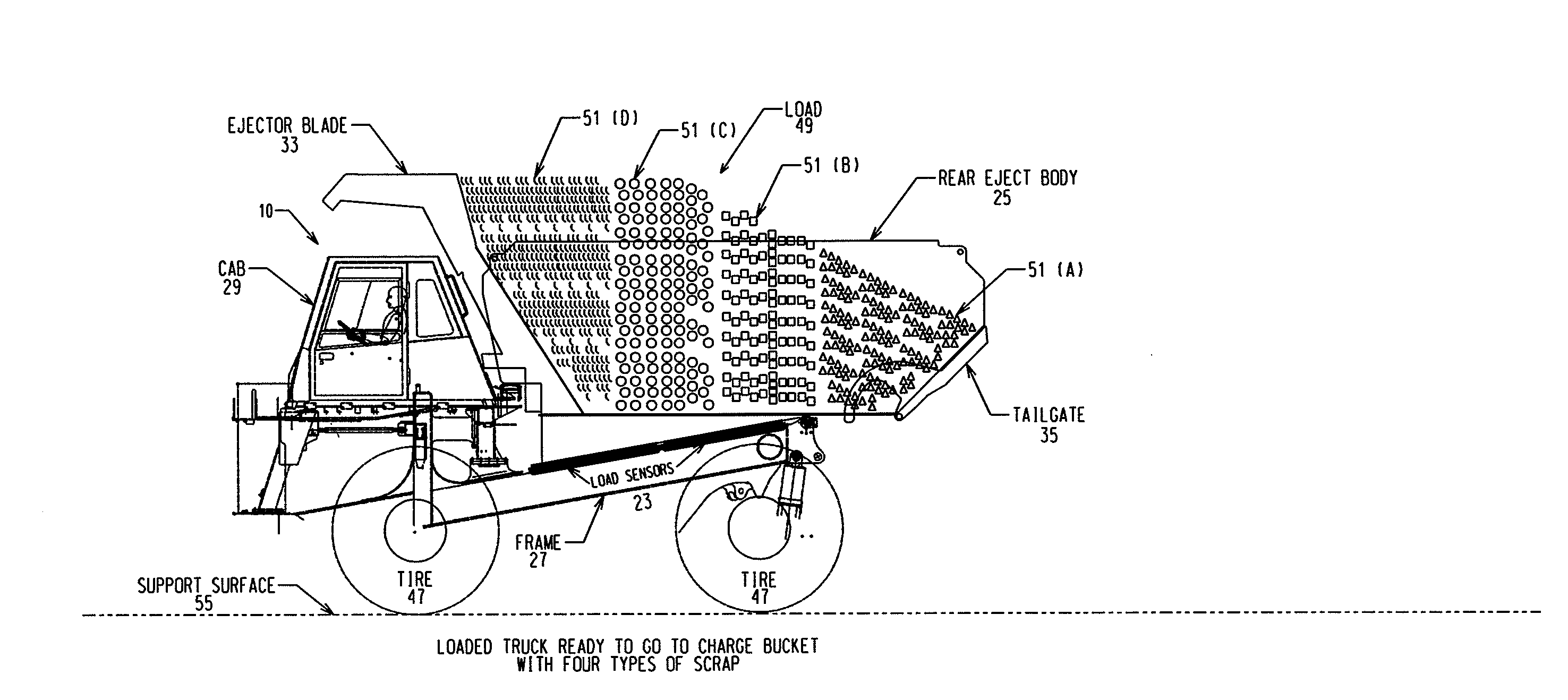Charge Bucket Loading for Electric ARC Furnace Production
- Summary
- Abstract
- Description
- Claims
- Application Information
AI Technical Summary
Benefits of technology
Problems solved by technology
Method used
Image
Examples
Embodiment Construction
[0053]In keeping with the invention, rear eject bodies of the type illustrated and described in U.S. Pat. No. 7,326,023 are described in detail herein. U.S. Pat. No. 7,326,023 is hereby incorporated by reference for everything it describes and teaches. These types of haulage bodies as distinguished from other types of haulage bodies such as those commonly called “dump bodies” that pivot about a hinge in order to elevate the body, allowing gravity to work to dump the load it from the body. Rear eject haulage bodies of the type used in the invention do not raise the bodies to discharge the loads. Instead, a rear eject body depends on an ejector assembly that pushes the load from the front of the body toward the rear. The load falls from the body's rear edge as the ejector assembly continues to push the load toward the back edge of the body. When the ejector assembly reaches the rear end of the body, the load has been completely discharged. The ejector assembly then returns to a positi...
PUM
 Login to View More
Login to View More Abstract
Description
Claims
Application Information
 Login to View More
Login to View More - R&D
- Intellectual Property
- Life Sciences
- Materials
- Tech Scout
- Unparalleled Data Quality
- Higher Quality Content
- 60% Fewer Hallucinations
Browse by: Latest US Patents, China's latest patents, Technical Efficacy Thesaurus, Application Domain, Technology Topic, Popular Technical Reports.
© 2025 PatSnap. All rights reserved.Legal|Privacy policy|Modern Slavery Act Transparency Statement|Sitemap|About US| Contact US: help@patsnap.com



